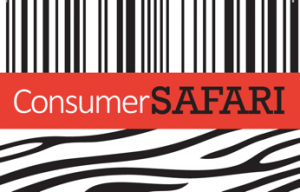We (generally) think segmentations are good
Those of you that have consumer/ customer/ patient segmentations in your business will know their power. Being able to understand and prioritise your prime prospects as a business is an extremely useful thing (and no, we’re not going to get drawn into one of those LinkedIn-esque discussions on whether segmentations are useful or not). Our general feeling is they do more good than they do bad.
But they need to be worked hard and KEPT REAL
What you will also know is they generally take a HUGE investment. Both money and time. Pretty much every segmentation we have ever worked on with organisations has never been easy. They are the classic example of the no pain, no gain principle in the research world.

Beyond the significant challenge of delivering a segmentation ‘solution’ as a research project there is then the, even harder, job of embedding it in the organisation. Cue months of segmentation roadshows around key markets, overpaying designers to create a snazzy looking booklets and videos. Fielding the same old questions and challenges again and again (along with some smart-arse brand manager who points out a minor yet annoyingly true flaw in some element of the work you’ve done and distracts everyone from the fact that it is still bloody good work).
Finally, you reach Nirvana. The months/years of effort have paid off. Everyone is singing from the same hymn sheet from CEO to admin staff. Teams are actively using all the materials you generated, referring to the segments you created in meetings and creative briefs. Hurrah!
And then you realise half the team you used to work with have moved onto new roles and have been replaced with new hires. Aaaaggggrrrhhh!
Customer connection can save you….
That’s where having a customer connection programme in place can well and truly save your bacon. Yes, you can dump booklets and videos on those newbies but there is nothing like getting out and meeting segments face to face in their environment. Those experiences will more firmly embed REAL customers in their minds and be the perfect complement to the robust facts and figures that sit in the segmentation research materials.
This was exactly the situation we faced with one of our recent clients. A major manufacturer of kitchen appliances. The program we ran with them, branded “Consumer Safari”, was the perfect tool to ensure every new hire got hands on with their segments from day one. In this case, getting into the segments kitchens, rummaging through their cupboards and cooking a meal together.

Furthermore, as we did more and more sessions, it highlighted how these connections gave employees the experience to challenge some of the ‘urban myths’ that had built up in the organisation about key segments. For example, one key segment was the kind of consumer that LOVES cooking. They do everything, it’s a passion. The joy is in the process as much as it is the output. We won’t reveal too much but one of the words used in the title of this segment was ‘Devotee’.
The problem was that overtime this segment had been placed on a bit of a pedestal – they were becoming an aspiration rather than a bunch of REAL consumers. The name ‘Devotee’ was evoking images of some sort of faultless perfection where, in reality, these people were still human. Yes, they cook far more than your typical cook. They cook to a far higher standard and typically own more expensive, more capable bits of kitchen appliance kit.
But they still had lives. A lot still have children in the house creating mess and chaos and requiring ‘normal’ meals like spag bol and pizza. Their kitchens are not showrooms of perfection and their menus are not all of a Michelin Star standard. Overtime many employees internally had forgotten that, so when confronted with the normality of these consumers lives through first hand consumer connections it was a refreshing reality check.
Use connections to keep to you tuned into reality
So, think about where and how customer connection can bring customers into your team. Either introducing new hires to your key segments or, maybe more importantly, giving all of you a refreshed view of the reality of your customers lives.
In short – get out and Mingle. Be more connected.

